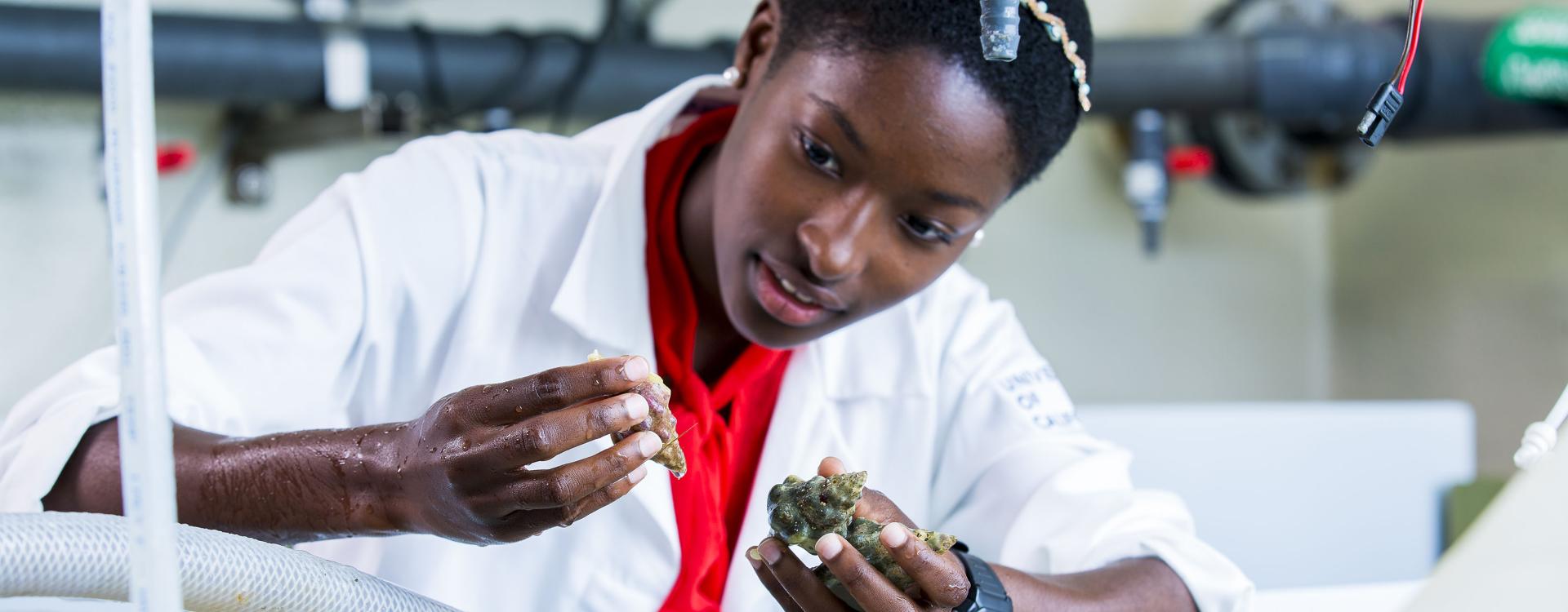
Xochitl Clare, doctoral candidate in the Hofmann Lab in the Department of Ecology, Evolution, and Marine Biology, UC Santa Barbara
Scientists, fishermen and nature lovers alike worry how sea creatures will fare as the oceans change around them. There’s plenty of evidence that higher temperatures will place stress on marine animals. But just as important is the heat’s effect on their larvae, microscopic plankton drifting along in the water column. These early life stages, so hard to see, are often overlooked in research and in management.
Researchers have begun assessing how animals in these vulnerable early stages will cope with environmental changes, and what that may mean for ecosystems and fisheries. Marine biologists at UC Santa Barbara investigated the effect of elevated temperatures on Kellet’s whelk larvae, a common Southern California sea snail and the target of an emerging local fishery. The findings appear in the Journal of Shellfish Research.
“While young Kellet’s whelks are able to withstand a wider range of warmer temperatures than we expected, marine heatwaves remain a threat, especially as baseline temperatures rise,” said lead author Xochitl Clare, a doctoral candidate in the Hofmann Lab in the Department of Ecology, Evolution, and Marine Biology. Her work was supported by the National Science Foundation’s Louis Stokes Bridge to the Doctorate Fellowship and Graduate Research Fellowship programs.